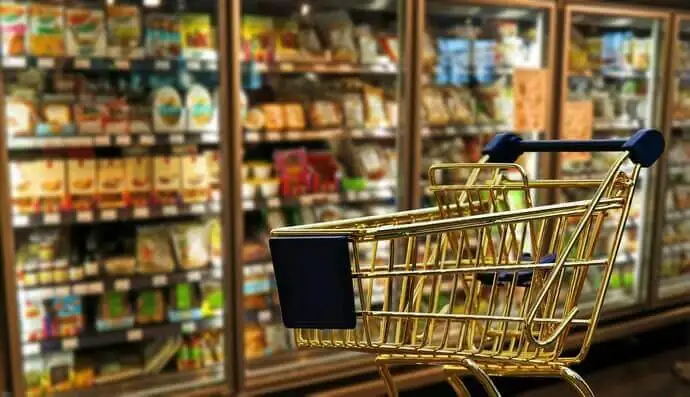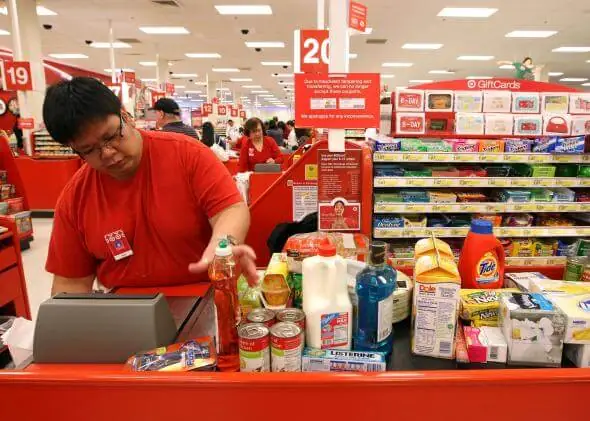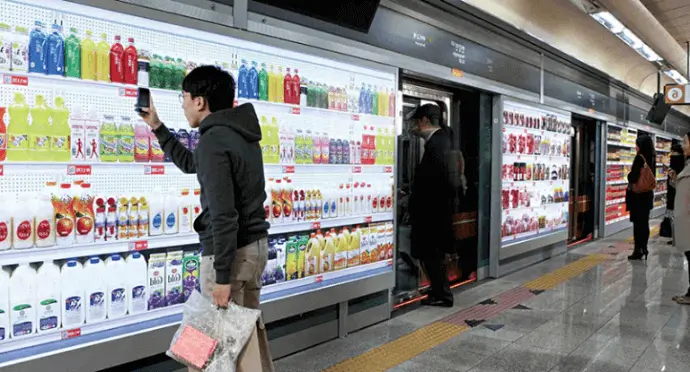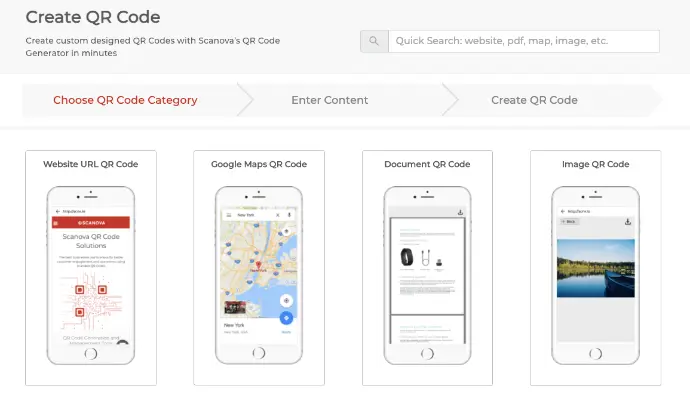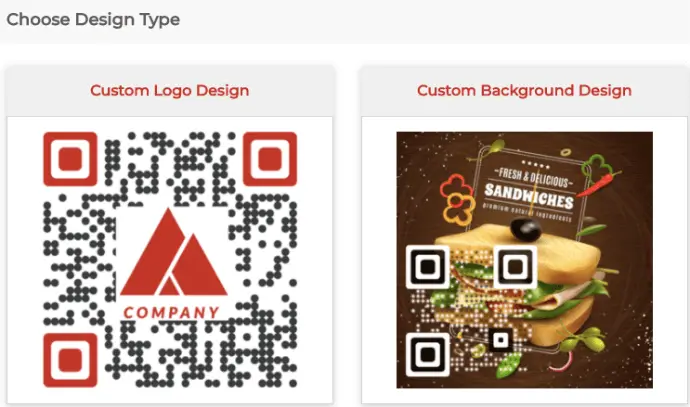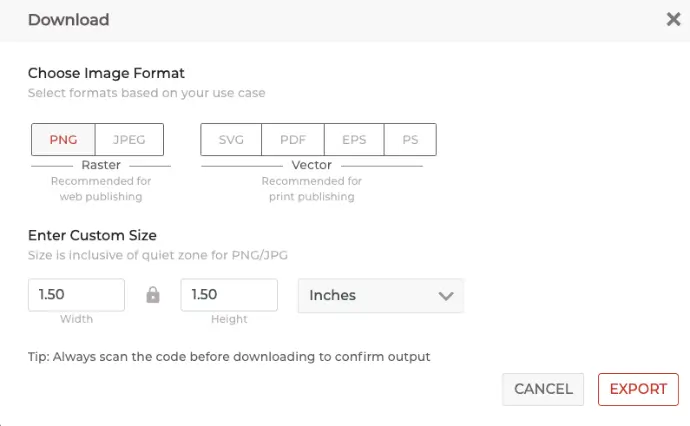You probably run a supermarket store. It would offer a wide variety of food, beverages, and household products. And like any business, you’d like to make the most of it.
To do it, you not only need to follow best business practices but also ensure a safe shopping experience for your customers. But the question is—how? With QR Code technology.
While QR Codes have been around for more than 2 decades now, they have picked up very well for the last 6-7 years. From payments and inventory management to marketing and security, they are being used across different use cases.
In this article, we’ll see seven use cases of how a QR Code can be used to make a supermarket better.
A. How QR Codes are useful in a supermarket
Here are the seven ways you can upskill the in-store experience for your customers while making your processes better:
1. Give product details via shelves
Do you know simply putting products on shelves is not enough? That’s because customers often want to know its detailed information such as offers, benefits, price, and warranty.
And how do they get it? One way is by printing the required details and putting them alongside the product.
However, it is often impossible to do so because of the limited printing space. As another option, your staff members can help relay the product details. But there are various problems with that. First, you’ll have to appoint multiple people to do that which may cost a lot. And that might not be feasible all the time.
Here, a Product QR Code can help you out easily. Using it, you can add as many product details as you want. For example, text, images, video, website, and even social sharing buttons.
And the best part is it occupies only a little space and can be added alongside the product on the shelf. Customers can then scan it to see all the encoded details in no time.
In fact, during COVID-19, 7-Eleven in Japan introduced a QR app that let shoppers scan QR Codes on products to view details, make payments, and even enter or exit the stor
2. Manage inventory
Generally, barcodes are used for inventory management purposes. However, they come with their own share of limitations:
a. They store limited information
b. You need dedicated hand-held scanners to scan the barcodes
c. Barcodes don’t get scanned once damaged (which is quite common during inventory handling)
d. You cannot edit them with new information once you’ve created them
However, there is a new sheriff in the town—QR Codes. QR Codes are efficient and reliable in eliminating all these problems.
Across various industries, QR Codes are currently replacing barcodes for inventory tracking. Thus, it makes sense to generate them. And you can do it via a QR Code bulk generation service that allows you to create multiple QR Codes smoothly in no time.
3. Give coupons and discounts
You know the importance of coupons and discounts. They do not only attract customers but also keep the existing ones coming back.
And a Coupon QR Code helps you do just that in a much simpler way. It serves two benefits:
a. QR Codes make the entire coupon redemption process contactless. That means you can simply send them to your customer’s phone to make help them redeem it. No need for them to carry the traditional coupons all the time
b. Also, with a Coupon QR Code, customers don’t need to remember the code or type it manually. They can simply scan the QR Code and click on the Redeem button to avail it. It’s that simple
4. Offer contactless payments
Contactless payment is one of the most common use cases of QR Codes. They can save your customers from long queues to pay their bills. Moreover, it makes the whole process faster and smoother.
But the benefits of QR Code payments don’t end at the customer’s end. Retailers also get benefitted from them. For example, they do away with the need for the retailers to install any expensive set-up to accept payments. They simply need to create the QR Code and place it at the billing desk. And customers need nothing more than an internet-connected smartphone to pay their bills.
5. Gather feedback
It is quite important for a business to get regular customer feedback. After all, that’s how you can determine whether your customers are enjoying your services or not. It even gives valuable insights into your areas of improvement.
But getting customer feedback is not an easy job. When you give them the link to your feedback form, they have to tediously type it in the browser to access the form and finally fill it.
A QR Code can make this entire process easier. You can create one for your feedback forms and put it out. You can add it to the store premises, at the checkout counter, or even on the bills.
Customers will simply have to scan it to fill the form. No need to manually type anything. And the simpler the process, the better are the conversion (forms filled) here.
6. Drive web traffic or social media followership
Do you have a website for your business? It could be to give the latest discounts and deals, evoke awareness about your business, or even help customers order online. Then you’d want the customers to visit you online.
And a Website URL QR Code can help you do that. Just create one and place it inside your store premises. When scanned, it will take them to your website in no time.
Similarly, you can also increase your social media following with a Social Media QR Code. As customers can scan it, they will see a custom page containing buttons with links to all your social media accounts. They can then select their favorite one to follow you online.
7. Increase app downloads
Similarly, if you have a mobile app for your business, you’d want people to download it.
And an App Store QR Code can make the whole process easier. Just place it on your print promotions or in-store premises. When scanned, it will redirect the end-users to your app on the relevant app store depending on their phone’s operating system.
In addition, if you’d like them to visit a particular page in your app, you can go for an App Deep Link QR Code.
Related : QR Code For Link
B. Example of supermarkets using QR Codes
Here are some companies leveraging QR Codes for their benefits:
1. Amazon
In 2016, Amazon launched Amazon Go, a retail store with the ‘most advanced shopping technology’ in the US. It is also known as ‘Just Walk Out’ technology.
To enter the store, customers can simply scan a QR Code via the Amazon Go app. They can browse, pick, and take the products they want and then leave. The amount of the purchase is debited directly from the user’s Amazon account.
2. Target
In 2015, Target announced the addition of a QR Code payment system at its stores. Consumers could pay for the products by simply scanning the Target QR Code via the Target pay app.
3.Walmart
In 2015, US Walmart launched Walmart pay. This feature allowed shoppers to pay by scanning a QR Code. Users just had to link their major credit or debit cards to their Walmart app.
When scanned, the billed amount was debited from the card linked to the app. This allowed users and Walmart to save the extra fee charged by credit card companies and Apple Pay.
4.Tesco
In 2011, Tesco used a big screen displaying a wide range of products. A QR Code was placed with each product. Customers could simply scan the QR Code next to the product they wanted to purchase. This added the product to their virtual cart in the Tesco Homeplus app on their smartphone. The products were then delivered to their doorstep.
C.How to create a QR Code for supermarket
Now you know why it makes sense to take advantage of QR Code for supermarket stores. Next question is—how to create one?
1. Decide on a QR Code category
Depending on what content you want your end-users to see, you’ll need to select a relevant QR Code category.
For example, if you want to provide coupons and discounts, you’d need a Coupon QR Code. On the other hand, if you want to increase your app’s downloads you’d create an App Store QR Code.
Once you’ve decided on the QR Code category, head on to find a suitable QR Code generator. For your convenience, here is a detailed comparison chart of the best QR Code generators available online. You can go through this to find the best one for your use case.
Related : QR Code For Link
2. Create a QR Code
Using Scanova for demo purposes, here’s how you can create a QR Code for your supermarket:
a. Go to Scanova
b. Select the relevant QR Code category
c. Enter the content you want to encode and click Continue
d. On the page that loads, name the QR Code and click Create QR Code
e. Now, you’ll see the preview of the QR Code along with the Edit Design option
f. If you click on the Edit Design option, you’ll then see two design options to choose from—Custom Logo Design and Custom Background Design
Custom Logo Design: It allows you to add your company’s logo and colors to the QR Code. A logo can be an image or text.
Custom Background Design: It helps you place your QR Code on an image.
g. Once you’ve decided on the design or no design, click Download. A window will open prompting you to sign-up for a 14-day free trial. Once you’ve signed up, proceed to download the QR Code
Note that no credit card information is required for sign-up.
8. Now you’ll be asked to specify the QR Code image’s size and dimensions. Once you submit the details, click Export
That’s it. Your QR Code will be downloaded and ready for use. It is always advisable to test scan the QR Code before putting it out for your customers.
That is all you need to know about how QR Codes can revamp your entire supermarket business. You can now go ahead to create a QR Code and make your supermarket processes better.
